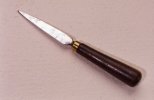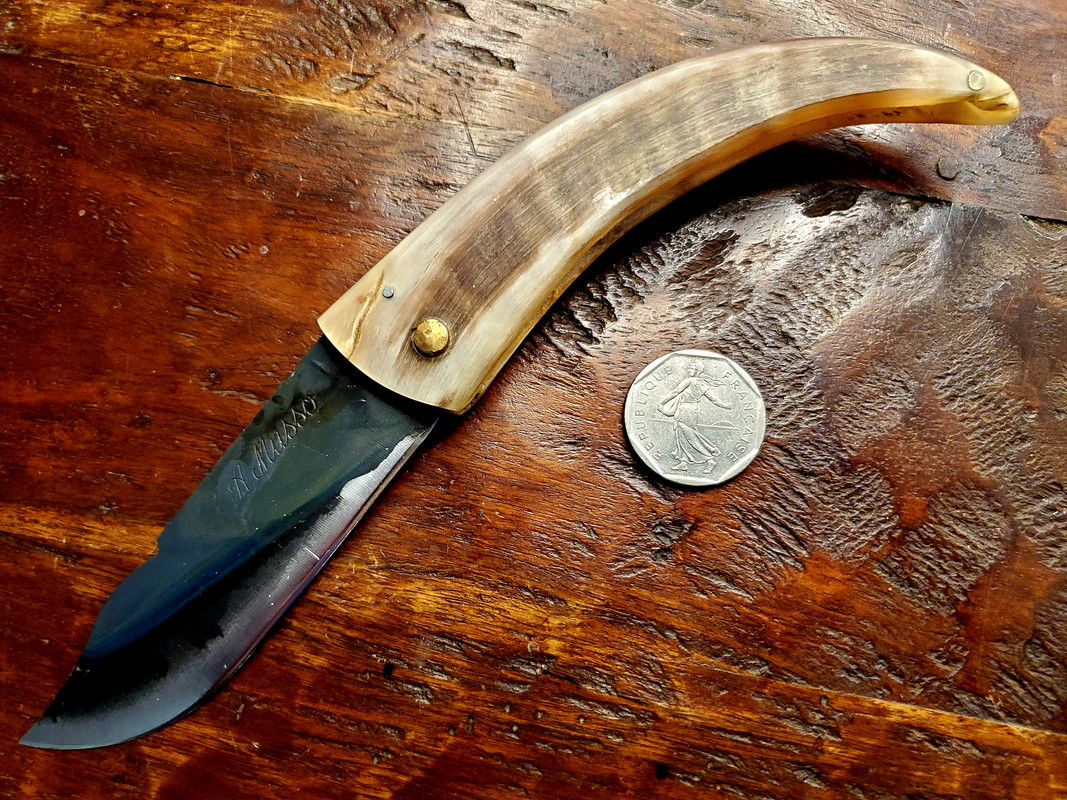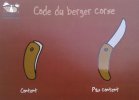Do you know if this is considered a Corsican knife, as in a regional knife? Without getting into intricate political/mafia/mobster preconceived notions, it is both, regional, Corsica is France and of course typically Corsican. There is no authentic replica elsewhere (ie made in Thiers -see after-).
Corsican cutlers have been quite worried by the "vendetta" knife, which is, as pointed out by @Achillepattada is a typical invention of Thiers cutlers made for tourists (in the XIXth cent. already, following a trend set by Mérimée's Columba' novel, etc.).
Later, Corsican cutlers created a league (sic) to protect the pattern but some cutlers did not want to be in that league, and created an alternate syndicate...(- see what I mean???- no??? - get out of there Napoli and Calabria




-)
I looked up Cornicciolu and found a few different blade styles.
As can be expected, each cutler has his own variation, but the shape is always based on goat/ram/bighorn horn and a forged blade. According to the league, all blades have to be (theoretically) forged by hand...
Are the curves on the spine of the blade representative of anything? not to my knowledge.
This postcard (from Corsica) sums it quite well. (Corsican shepherd's code)
View attachment 1245159
happy unhappy











